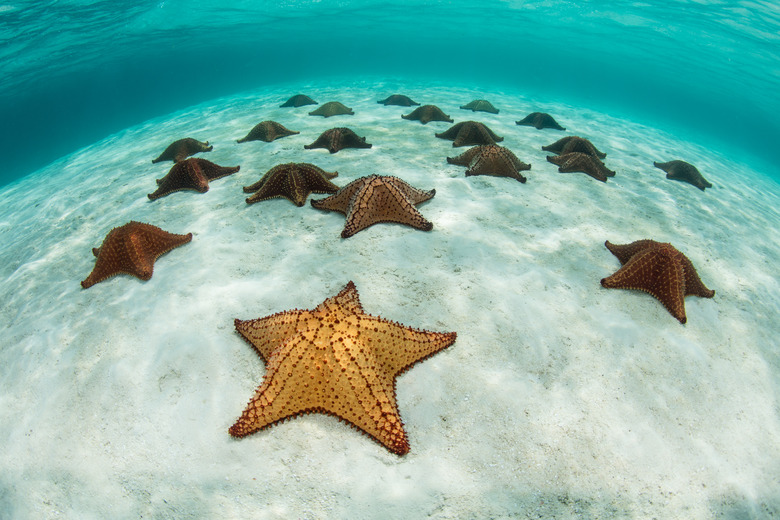Advantages & Disadvantages Of Hydrostatic Skeleton
A hydrostatic skeleton is one that contains no rigid, hard structures or bones for support, but rather relies on a fluid-filled cavity surrounded by muscles. It is the skeleton adopted by worms, starfish and other invertebrates, and carries with it a number of advantages and disadvantages over a more solid frame.
Fluid Shape
Fluid Shape
Because of the lack of permanently rigid structures, creatures with hydrostatic skeletons have a relatively flexible shape which often enables them to fit through oddly shaped passages.
Strength
Strength
Creatures with hydrostatic skeletons cannot utilize properties of leverage inherent in boned joints, and often do not have the lifting capacity that exo/endoskeletal creatures have. However, they can squeeze between spaces and expand, to allow for a "prying open" movement.
Fragility
Fragility
If the fluid-filled sac, called a coelom, is punctured, movement is inhibited. The fluid must be fully encased to work properly.
Healing Time
Healing Time
While bones take a long time to heal and may heal improperly, coelomic fluid is made up of mostly water and can be regenerated quickly. This allows many creatures, like earthworms, to grow back a significant portion of their mass after being damaged.
Movement: Peristalsis
Movement: Peristalsis
Hydrostatic skeletons allow movement through peristaltic motion or by waving flagella. In peristaltic motion, as one portion expands, another contracts, slowly pulling along the creature; peristaltic movement generally is disadvantageous if speed is needed.
Movement: Flagellation
Movement: Flagellation
In flagellation, small appendages are waved back and forth to provide thrust in one direction, providing quicker movement than peristalsis.
Cite This Article
MLA
John, Evan St.. "Advantages & Disadvantages Of Hydrostatic Skeleton" sciencing.com, https://www.sciencing.com/advantages-disadvantages-hydrostatic-skeleton-5521715/. 13 March 2018.
APA
John, Evan St.. (2018, March 13). Advantages & Disadvantages Of Hydrostatic Skeleton. sciencing.com. Retrieved from https://www.sciencing.com/advantages-disadvantages-hydrostatic-skeleton-5521715/
Chicago
John, Evan St.. Advantages & Disadvantages Of Hydrostatic Skeleton last modified March 24, 2022. https://www.sciencing.com/advantages-disadvantages-hydrostatic-skeleton-5521715/
